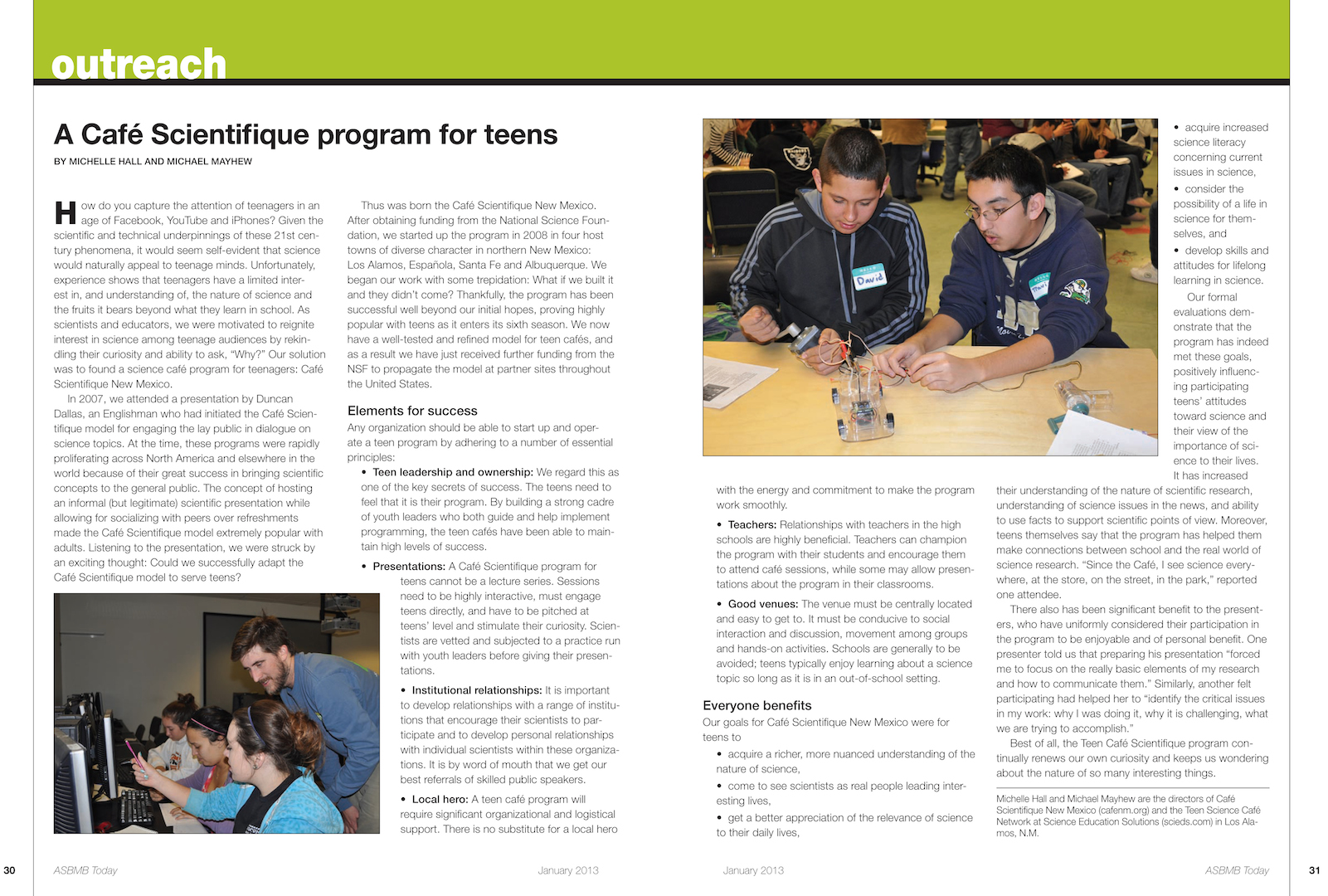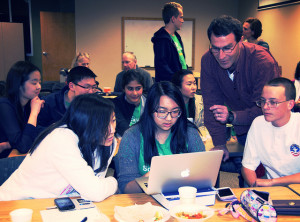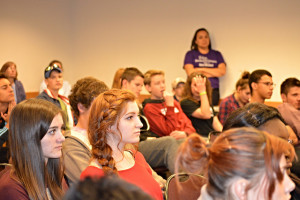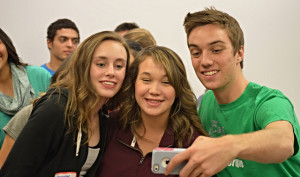
Science Café Review
CAFÉ REVIEW – JULY
Here is the July Science Café Review. The purpose of the Review is for us to learn from each other’s experience. Our experience is about bringing science into local culture. Cafes are now expanding round the world (there are probably around 600), so there are many different methods, ideas, events, problems and activities. Writing about these may interest us, inform us and encourage us to engage science with cultures in new ways.
In this Review there are two articles.
- Teen Cafes – a novel application of the café scientifique model.
This started in New Mexico and has now moved to four other states in America.
- Barometer – science, café and debate
A Brazilian café involving social networking.
The Science Café Review will contain reports on cafes, describing the form, or subject, speaker, audience, response, discussion or conclusion. The event might be noteworthy, unusual or amusing; the review might involve ideas about science, science communication, argument, culture, sociology or cafes. The reviews would all be personal, not academic, but they might give interesting accounts of the variety of cafes, their form, social relevance, problems or developments. There is also the opportunity to write about current circumstances in relation to science, social change, informal education, etc. This might be a way we find out about cafes and learn from their experience.
If you have a website for your café, please put this Review on it. Hopefully people will respond with their ideas and experience. There will be a Review at the beginning of every month; please send any articles for inclusion to me by July 26th to cafe-sci@dial.pipex.com . And please write in your own language!
Hope you enjoy it.
-Duncan Dallas
1) Teen Cafes: a novel application of the café scientifique model
Michael Mayhew and Michelle Hall
Science Education Solutions, Inc., Los Alamos, New Mexico, U.S.A.
In 2006, we attended the annual meeting of the American Association for the Advancement of Science in St. Louis and happened upon a session in which Duncan Dallas gave a presentation about the Cafe Scientifique approach to engaging the public with science and scientists. We thought this was a splendid idea indeed, and it led us to wonder whether this might be a good way to connect science and that hard-to-reach segment of the public, the high school teenager. We were able to get a grant from the U.S. National Science Foundation to try the experiment, which we began in four towns of very diverse character in northern New Mexico: Santa Fe, Los Alamos, Albuquerque, and the tiny town of Española.
Our primary goal was for the teens to get a significantly increased understanding of the nature of science and to develop a realistic perception of scientists and the lives they lead… which they typically do not get in school. We wanted to get across to the teens that a scientist is a real, complex, multidimensional human, like them, with his or her own unique set of motivations, delights, abilities, and baggage. We wanted for our presenters to convey that—in part because of a career in science—he or she has had, and is having, a particularly interesting life. We wanted to instil an appreciation of the relevance of all kinds of science to their own lives.
Our secondary goal—honestly, we only really discovered this as an important goal after we got into it—was to help our scientist-presenters to become able to effectively communicate the fruits of their own science to the public, especially our particular segment of the public—high school teenagers— who, frankly, many scientists find to be intimidating!
We have just now completed the sixth season of Café Scientifique New Mexico (cafenm.org). Our Teen Cafe model has evolved through trial and error—and formal evaluation—over those years. Contrary to our initial trepidation—what if we throw a Teen Cafe party and no one comes?—the program has proven highly popular with the teens, and our evaluations tell us that we have been quite successful in achieving our goals1. The program is popular with teens for the same reason that adult cafes are popular, the blend of a collegial social setting where participants can interact with each other and the satisfying of participants’ curiosity about a science-based topic through lively interaction with a scientist.
But there are other secrets of success associated with this particular audience2. One is that to the teens achieve a sense of ownership of the program via the formation of Youth Leadership Teams in each town. We encourage the teens to lead all aspects of the program to the greatest extent possible, with adults in the background for support as needed. Another is that, while with a very few unusual exceptions we have deliberately avoided holding cafes in schools, we have made a point of building relationships with high school teachers, who have proven supportive and helpful in innumerable ways. And a third is that in every cafe we work with the presenter to develop some sort of activity that the teens can engage in as an adjunct to the interaction between the presenter and the teens—teens like to do stuff. Hands-on activities that actively engage the teens help to cement the science message.
The degree of engagement needed to spark interest in science topics—especially for the teen audience—is unfamiliar and daunting to many café scientist-presenters, even those with experience in public speaking. Most have been trained to approach science communication in the “information deficit” mode. But with coaching from the program staff, after some initial trepidation the scientists typically rise to the occasion.
1 Mayhew, M., and Hall, M., Science Communication in a Café Scientifique for High School Teens, Science Communication, 34 (4), 547-555, DOI 10.1177/ 1075547012444790.
2 Hall, M., Foutz, S., and Mayhew, M., Design and Impacts of a Youth Directed Café Scientifique Program, International Journal of Science Education, Part B: Communication and Public Engagement, DOI: 10.1080/21548455.2012.715780.
We identify potential cafe presenters within local organizations with a science mission. We look particularly for scientists working in areas that our Youth Leaders have expressed interest in hearing about. We carefully vet potential presenters. After informal conversations with a presenter in which we convey the essential ingredients of a successful cafe, we provide him or her with a guidance document intended to formally frame their preparation for and conduct of the café sessions. It stresses the importance of knowing the audience. Teens will readily engage with a presenter on some hot science topic if it is accessible to them. The presentation needs to be free of jargon. We encourage presentations organized around one essential provocative idea or concept. We encourage presenters to tell a story, but leave some mystery in it. We stress that interactivity is one of the most important ingredients of a Teen Café. In a café presentation, communication—meaning two-way verbal interaction, supported by a few key graphics—is of the essence.
We have found that it is highly valuable—and indeed essential—for presenters to do a “dry run” with a small group of Youth Leaders before presenting to a full house. This has proven exceedingly valuable in getting the presentations pitched at the right level and the graphics comprehensible. It also serves to overcome a certain intimidation factor for many presenters. The attitude of this presenter about the value of the dry run is typical:
The dry run was immensely valuable. It helped me select appropriate verbiage and content for the presentation. It also helped me gauge the level of delivery….After the dry run, I made significant changes to the presentation, including the elimination of confusing content, identification of real-world connections, and simpler examples.
“Cafe NM” has had over 50 presenters. Without exception, they considered their experience engaging with teens via the cafe program to have been enjoyable and of value. They have improved and broadened their communication skills. Some have also benefited in an unexpected way: they have come to a new perspective on their own research. As one presenter put it:
The café experience was beneficial to me as a scientist in that preparing an interactive talk for an audience of young people helped me identify the critical issues in my work: why I was doing it, why it is challenging, what we are trying to accomplish (vs. being bogged down in technical details). This really focused my thoughts about my work.
The Teen Science Cafe Network
As a result of the success and maturity of our Teen Cafe model—and interest in other organizations in starting their own Teen Cafe programs—we got new funding from NSF to develop a network of such programs around the country. It has now been through its first season. Four “Founding Members” of the Teen Science Cafe Network (teensciencecafé.org)—in Florida, Colorado, North Carolina, and the St. Louis, Missouri region—started up Teen Cafe programs. Each applied the model with a delightfully unique flair appropriate to local institutions and demographics. Each “node” in the Network typically runs cafes in multiple local venues.
Our Teen Cafe topics have covered a very wide range, from belly-button biodiversity to cyber- security to flocking behavior of birds to a day in the life of a teen dolphin to corals on acid to emergency room medicine to alternative fuel cars. Presenters have come from a great variety of local institutions with a science mission. For example, in New Mexico, excellent scientists working at the cutting edge across a vast array of research areas at Los Alamos National Laboratory have provided us with many café presenters. Others came from the University of New Mexico: the College of Medicine, the Department of Anthropology, and the Department of Computer Sciences. Still others came from a variety of organizations: the U.S. Geological Survey, the U.S. Air Force, the forensic team of the Santa Fe Police Department, the New Mexico Office of the Medical Examiner, a biological research institute, and a small business specializing in holographic technology.
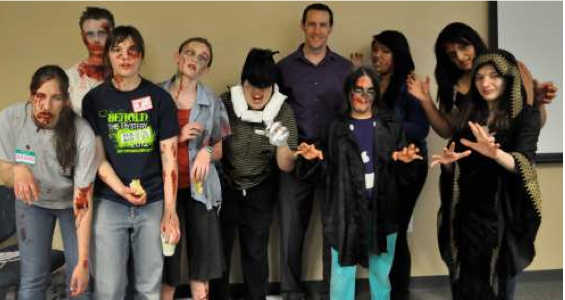
Figure 1. Participants in “zombie” (brain neuroscience) Teen Cafe, Cafe Scientifique New Mexico.
The wide range of cafes run by Network Members this last season and resources associated with them can be found on the TSCN website (teensciencecafé.org). A highlight was that two of the Network sites organized cafes with a Zombies! theme, each with a different twist. For the St. Louis node— Gateway Teen Science Cafe—Terri Rebmann from St. Louis University presented on the very real nature of bioterrorism, infectious diseases, and disaster preparedness with an end-of-the-world zombie twist. Over at CafeNM, teens learned how the brain controls emotions and behaviors from Russell Morton of the University of New Mexico College of Medicine. They learned which parts of the brain perform specific functions and how damage to that part of the brain might induce zombie-like behavior. This was an engaging and fun way to teach about brain neuroscience. The presenter delivered the story in a tongue-in-cheek style as if he actually believes in zombies. As a plus, the presentation incorporated video clips from every popular zombie movie of the last 40 years.

Figure 2. Activity portion of Teen Cafe on flocking behavior in animals and teenagers. Note “predator” in gorilla suit. NC Open Minds Cafe, North Carolina.
Rather than being a collection of static, independent entities, Network nodes are part of a dynamic network, a community of practice with active sharing of lessons learned, documents, images, videos, ideas for Café topics and formats, expertise in social media, and many other resources. We want the Network as a whole to be much greater than the sum of its parts. Any organization wishing to start a Teen Cafe can do so by registering on the Teen Science Café Network website and agreeing to adhere to five “Core Design Principles.” We expect the Network to grow steadily over the next few years. We have resources to help others start a Teen Café, and it is part of the ethic of the Network that existing Members will actively help new Members start and successfully run a Teen Café program.
2) Barômetro – ciência, café e debate (Barometer – science, café and debate)
Cláudia França Prieto – Centro Federal de Educação Tecnológica de Minas Gerais/ CEFET-MG claudialactea@yahoo.com.br
Silvania Sousa do Nascimento – Faculdade de Educação da UFMG silvania.nascimento@gmail.com

Figure 1 “Barômetro” Science and Classroom. September, 2011 Source: VENTURA, 2011
The Barômetro – ciência, café e debate project is a Science Cafe developed by Diretoria de Divulgação Científica of Universidade Federal de Minas Gerais (UFMG) in partnership with the institutional Cultural Center and radio, 104,5 UFMG Educativa.
It was conceived under three parameters: Public Conference, Digital Interface and Radio Program.
The Public Conference brought to the space of debate representatives of the scientific community and civil society. The discussions involved themes from daily life that were related to science, in a very friendly environment, for example science and samba, science and astrology, science and religion. The presence of members of the public, both in person and virtually, complements this. A study of public made by the project’s team revealed the presence, in most cases, of students, teachers and researchers, among other professions.
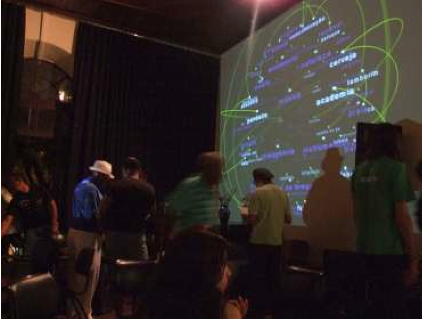
Figure 2: “Barômetro” Science and Samba/ March, 2011 Source: VENTURA, 2011
The Digital Interface promotes the participation and interaction of members of the public by the use of mobile devices. For this parameter we created software that stimulates interaction and public participation. The software was called “The Semantic Sphere” and was accessed via tablets and at the same time, projected on the wall. A group of words related to both themes of the debate (science and samba, science and religion, and so on) was available. The tablets circulated among those present, who could make connections, write questions and offer comments to the debaters without coming into the public space. This interaction permitted the development of significant amount of questions and comments. Each event generates a table with combinations of words and their comments or questions that make up, month by month, the project’s database. The data generated can serve as a basis for researches related to science public communication.
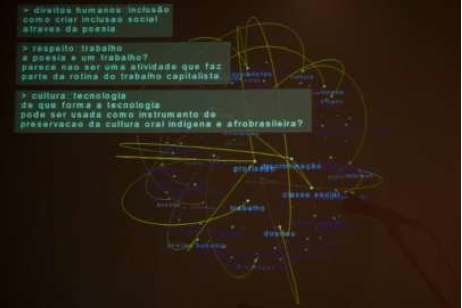
Figure 3: The Semantic Sphere projection – “Barômetro” Science and Social Inclusion/ October, 2011 Source: VENTURA, 2011
The Radio Program incorporated a number of new elements. Initially, this involved the development of a script that outlined the debates. This script included presentations by a reporter, mediation with the public by mobile devices or tablets, musical presentations, debate and public participation.
The script was one of the key elements in this process and was developed to maintain the flexibility of the events and ensure the balanced participation of the debaters and members of the public.
Another highlight was the educational dimension, through the participation of students from university courses, especially the Social Communication course, driving and mediating the programs and acting as technical support. Among the students’ roles were the reporters who led the programs, the reporter who interacted with mobile devices and the “tablet reporters”, who mediated with the audience.
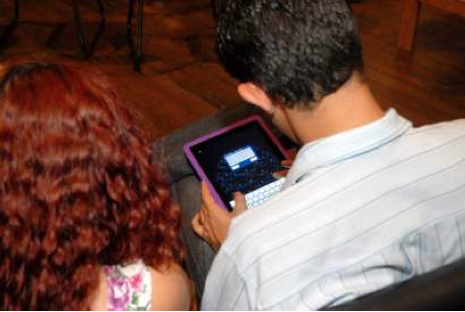
Figure 4: Interacting via mobile devices – “Barômetro” Science and Social Inclusion/ November, 2011 Source: VENTURA, 2011
The web radio and the Twitter widened the sphere of debate by allowing it to reach another public, another audience, who were not necessarily present at the time of transmission. The real-time transmission also contributed to the expansion of the space of debate to other places and other contexts.
The musical performances enabled the participation of artists from cultural and social projects and could be related to the topic discussed or not. Music provided moments of relaxation between the debate blocks and allowed “live” adjustment of programs.
Since 2011, at least eight radio programs have been produced per year. These have included Science and Samba, Science and Dengue, Science and Art, Science and Design, Science and Religion, Science and the Classroom, Science and Astrology and Science and Social Inclusion
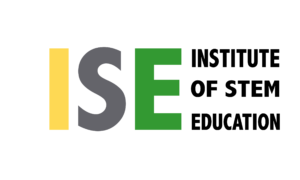
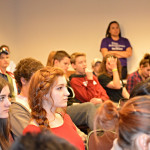 Previous Post
Previous Post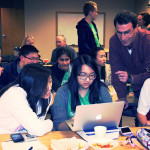 Next Post
Next Post